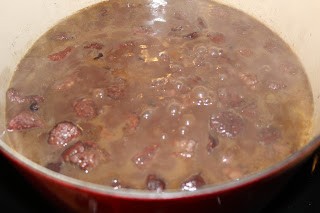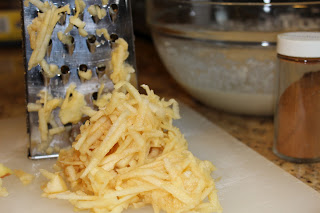I'm hoping this Frankenstorm won't live up to the hype. But just in case it does, here's a no-cook recipe you can make with some of the canned beans you've now got in your cabinet. (Of course if you're eating canned food that you can't cook then most likely your power is out. Which means you can't hop on your computer to look at this recipe.) Okay, I'm going to ignore this obvious break in logic and move on.
This recipe isn't just one to make in desperate times. I actually made it a lot this summer. It was a great lunch, filling and satisfying, but not heavy. It's very adaptable. Use whatever kind of beans you have. If you don't have shallots, add red onion, yellow onion or no onion at all. Use regular tomato in place of the grape tomatoes. Substitute lime juice and olive oil for the vinaigrette. You get the idea.
Remember, a hurricane is no excuse for a bad meal!
Stay safe everyone!
Start with canned chickpeas, drained and rinsed.
Add finely chopped shallot...
...halved grape tomatoes...
...and julienned basil.
Prepare the vinaigrette. It's just balsamic vinegar, olive oil, a touch of honey and salt and pepper.
Whisk it until it's well combined.
Toss the vinaigrette with the chickpea mixture. Let it sit for a bit to let the flavors meld.
Dig in.
Chickpea
Salad
1 can
chickpeas, rinsed and drained
1 cup grape tomatoes, halved
1 to 2 shallots, finely chopped
1 Tbsp julienned basil
1 Tbsp balsamic vinegar
1 tsp honey
salt, to taste
black pepper, to taste
1/4 cup extra virgin olive oil
1. In
a large bowl, combine the chickpeas, grape tomatoes, shallots and basil.
2. In
another bowl, whisk together the balsamic vinegar, honey, salt and pepper.
Slowly add the olive oil and whisk together until well combined. (You can
adjust the proportion of balsamic vinegar to olive oil to suit your taste.)
3. Toss
the vinaigrette with the chickpea mixture.
4. Let
sit for an hour before serving to let the flavors meld.
Serves 1







































